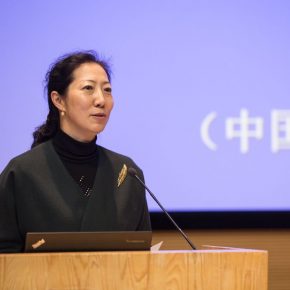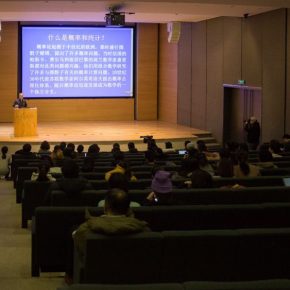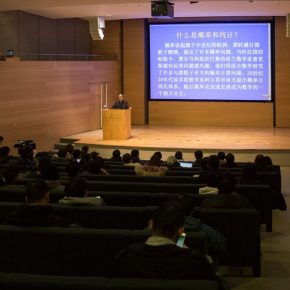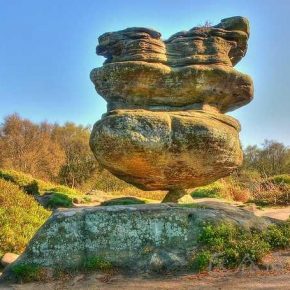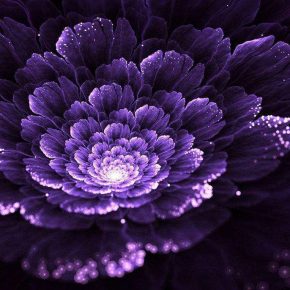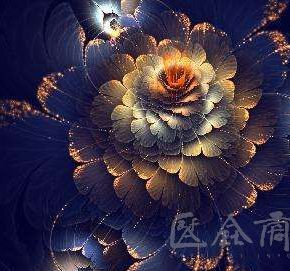
On the evening of December 18, 2017, the first EAST (Education, Art, Science, and Technology) Season of CAFA invited Yan Jia’an, a member of the Chinese Academy of Sciences (CAS), to give a lecture of “Probability Exposes the Mystery, Statistics Explain the Secret” at the Auditorium of CAFA Art Museum. Wang Xiaolin, President Assistant of CAFA & Director of CAFA Visual Art Innovation Institute, presided over the lecture. She introduced Yan Jia’an who is a researcher and doctoral tutor at the Institute of Applied Mathematics, Chinese Academy of Sciences, and has made a number of important achievements in the fields of probability theory, martingale theory, stochastic calculus, and white noise analysis. At the lecture, Academician Yan Jia’an used 14 cases from daily life to show how probability exposes the mystery, how statistics explain the secret. At the same time, he talked about his understanding of science and art.
At the beginning of the lecture, Yan Jia’an started from the definition to explain the concepts of theory of probability and statistics. Theory of probability originated in medieval Europe, when gambling with dice was popular so that the issue of probability was raised. In the 1930s, Andrey Kolmogorov, a mathematician of the former Soviet Union, proposed the axiomatics of probability, and then the theory of probability was quickly developed as an independent branch of mathematics. Some laws were hidden behind the stochastic phenomenon, and a basic task of probability theory was to explain these laws. Based on the theory of probability, statistics developed a series of principles and methods, studying how to collect and sort out the digital data that reflected the overall information of the objects, and relying on this complicated data (the called samples) for an analysis and inference of the overall features and the rules covered by the phenomena. Yan Jia’an has been engaged in the studies of the theory of probability and stochastic analysis, understanding the nature of probability and statistics, and written a poem on “Stochastic process does not mean random, while probability exposes the mystery; the order is covered by disorder, while statistics explain the secret.” to sum up his own experiences, which is the origin of the topic of the lecture.
Way of Thinking of “Probability”First of all, Yan Jia’an introduced a well-known “issue of birthday” within the theory of probability. And Yan then introduced three examples which were often mistakenly judged by intuition. It was particularly interesting that Yan studied the “South China Tiger Event” from the perspective of a probabilistic scientist. When Yan saw that the tiger in the photo and the tiger of the New Year picture were almost identical, he immediately made a judgment that “‘South China Tiger’s photo is fake”, because the similarities between the photo of the tiger and the New Year picture were over 90%, and the probability was zero. In the end, the court’s verdict also confirmed this judgment.
Probability can also explain miracles. For a single lottery player and a single lottery, the probability of one man winning a prize in a lottery is low (22.5 millionth), but on August 30, 2007, the couple Angelo from New York, the United States, won the “New York Lottery”, and it was the second time for the couple to win in a lottery, and they won a lottery together with 3 other people, sharing 10 million in 1996, which was a miracle. But Yan Jia’an said that the occurrence was of a high probability if it was repeated many times, from the perspective of the theory of probability.
Conditional Probability and Bayesian FormulaIn the middle of the 18th century, British scholar Bayes proposed the probability formula of “speculating reason with a result”, namely the well-known “Bayesian Formula”. Bayesian statistical theory could solve many problems that could not be solved in the past, and it can be used to assess the confirmed diagnostic rate of the diagnosis of disease, and also the designing of social investigations on sensitive problems.
This theory has also explained the Simpson’s Paradox. Then, he took an example to explain the statistical average in some news and reports which were of unrealistic significance. “If individuals are of great difference, average often erases the peaks, filling and leveling up the low-lying places, erasing the differences between individuals.” Yan then introduced the application of probability into the “Rules of the game”, “Blood tests of inbound travelers grouped by their customs”, and so on, to lead the audience to have a glimpse of the application of probability in real life.
“Science and Art in My Mind”What is the relationship between science and art? Academic Yan was invited to talk about the science and art in his mind that “The greatest truths are the simplest, and the greatest beauty is natural.” He emphasized the commonality and integration of science and art, and proposed that the common ground between science and art was located in the common pursuit of “truth” and “beauty”. Secondly, the creation of both required passion. Some outstanding scientists started from harmony and concise nature of theory, sometimes coming up with an idea and guessing with an aesthetic intuition, and the results often proved to be corroborated. The third commonality was that they have a common aesthetic criterion, namely evaluation criteria: “innovation” and “accomplishment is more important than technology.” As Einstein said, “Imagination is more important than knowledge,” “Raising a question is often more important than solving a problem”, and the requirement of innovation is suitable for all disciplines.
Science and art were unified and indivisible in the early stage of mankind, but it was gradually separated with social progress and scientific development. But currently, the blending of science and art has been given more and more attention which has become one of the characteristics of the development of science and culture in the world today. As early as the middle of the 19th century, the famous French writer Flaubert had predicted that “the more we move forwards, the more scientific the art is; at the same time, science is more artistic. They both break up in the foothills but gather on the summit.” Based on this view, Yan Jia’an explained the viewpoint of “art should be scientific and science should be artistic”. At last, he introduced his artistic achievement in Chinese calligraphy and poetry. Both the personal experiences of Yan Jia’an and the practical experiences of masters at home and abroad illustrate that the interdisciplinary expansion and study will surely benefit their own profession, which has enlightened the audience present at this lecture.
Text by Wu Huixia, translated by Chen Peihua and edited by Sue/CAFA ART INFO
Photo by Hu Sichen/CAFA ART INFO



